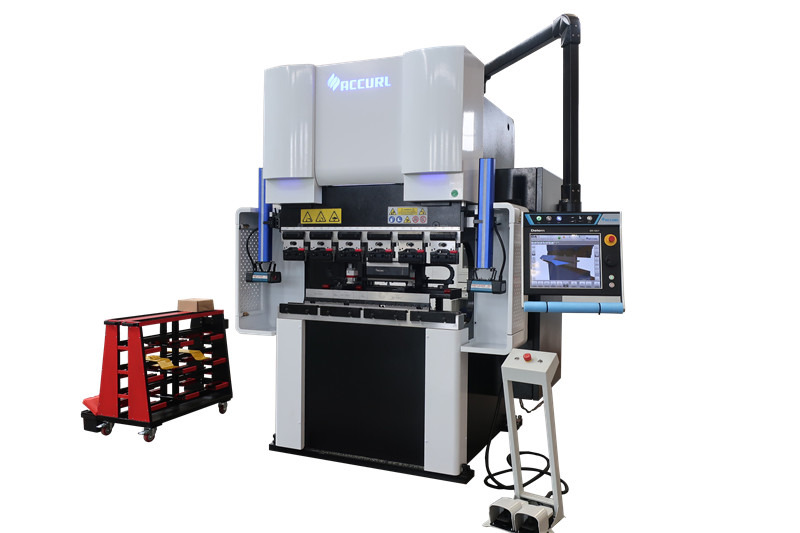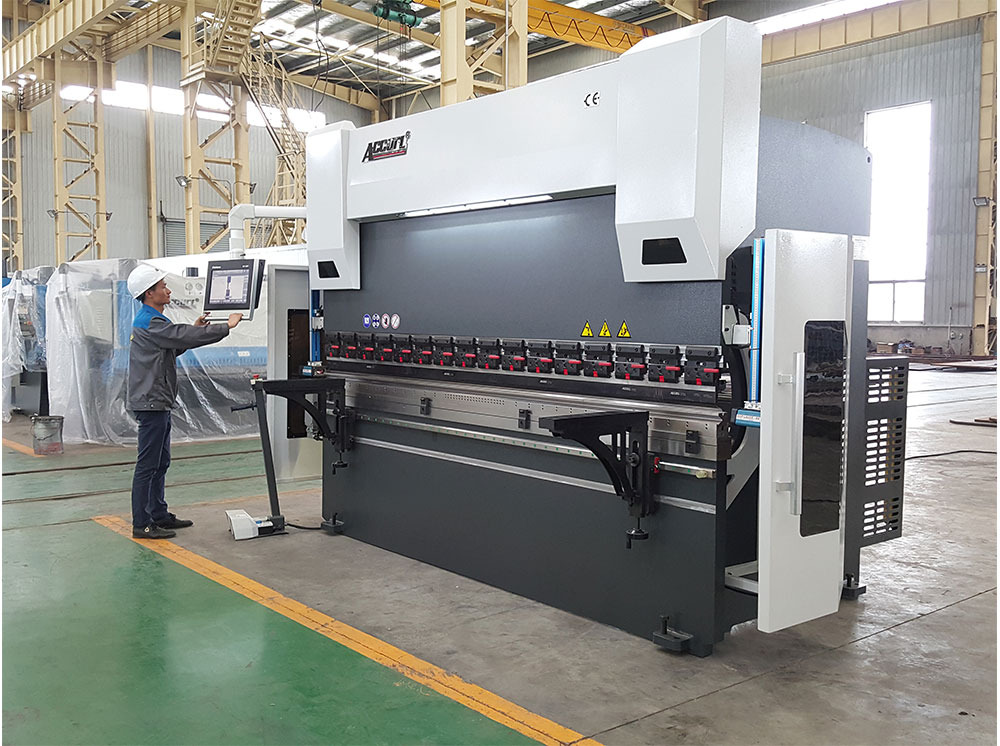In the dynamic world of manufacturing, press brakes stand as pivotal machines, integral to the shaping and forming of metal sheets. These machines, with their remarkable precision and versatility, are indispensable in various industrial processes. This guide delves into the essence of press brakes, their evolution, and their significant role in contemporary manufacturing.
Table of Contents
What is a Press Brake?
A press brake is a specialized machine used in manufacturing for bending sheet and plate material, primarily metal. It forms predetermined bends by clamping the workpiece between a matching punch and die. This foundational tool is critical in the fabrication of metal components, offering unparalleled precision in creating a wide range of shapes and sizes.
Historical Evolution of Press Brakes
The Beginnings: Mechanical Levers to Hydraulic Power
The journey of press brakes begins in the early 20th century, evolving from simple mechanical systems to sophisticated hydraulic and electric mechanisms. This evolution reflects the industry’s continual pursuit of efficiency, precision, and safety.
Types of Press Brakes
Each type of press brake machines brings unique qualities to the table, catering to various manufacturing needs.
Mechanical Press Brakes: The oldest type, known for their simplicity and reliability.
Hydraulic Press Brakes by ACCURL: Provide more control and versatility, suitable for a wide range of thicknesses and materials.
Electric Press Brakes: Offer high precision and energy efficiency, ideal for smaller, intricate tasks.
Hybrid Press Brakes: Combine hydraulic and electric features, balancing power with precision.
How Do Mechanical Press Brakes Work?
Mechanical press brakes operate through a flywheel mechanism, converting rotational energy into linear force to bend metal. Despite being overshadowed by more modern technologies, they remain relevant for certain applications due to their straightforward operation and durability.
What Makes Hydraulic Press Brakes Unique?
Hydraulic press brakes use hydraulic fluid and cylinders to generate bending force, offering more control and uniform pressure across the bend. This makes them ideal for complex and thick materials, where precision and power are paramount.
Key Components of a Press Brake

Understanding the main components is essential for comprehending press brake functionality.
Ram: The upper part that moves down to press the metal against the die.
Bed: The stationary lower part where the metal sheet rests.
Die and Punch: Tools in various shapes that create the bends.
Back Gauge: A guide for positioning the metal sheet accurately.
Control System: The brain of the machine, programming and controlling the bending process.
How Does a Press Brake Operate?
Operating a press brake involves several steps:
- Selecting the appropriate die and punch.
- Setting up the back gauge for proper alignment.
- Programming the control system for the desired bend.
- Placing the metal sheet on the bed.
- Activating the ram to press the metal into the die.
Materials Suitable for Press Brake Forming
Press brakes are versatile machines capable of handling various materials.
Steel: Widely used for its strength and durability.
Aluminum: Preferred for its lightweight and flexibility.
Copper: Chosen for its electrical conductivity and malleability.
Others: Including brass, bronze, and specialized alloys.
What are the Limitations of Material Thickness in Press Brakes?
While press brakes are versatile, they have limitations regarding material thickness and type. These constraints are dictated by the machine’s power and the properties of the materials being worked on.
Advantages of Using Press Brakes in Manufacturing

Press brakes offer numerous benefits:
- Precision: Ensures accurate bends and angles.
- Versatility: Suitable for a wide range of materials and shapes.
- Efficiency: Speeds up the production process.
- Cost-Effectiveness: Reduces waste and optimizes material usage.
Safety Measures in Press Brake Operation
Safety is paramount in press brake operations. Key measures include:
- Regular maintenance checks.
- Proper training for operators.
- Use of safety guards and emergency stops.
Understanding Press Brake Tooling
Press brake tooling varies greatly, allowing for diverse bending operations. Choosing the right tooling is crucial for achieving desired results and maintaining operational efficiency.
How to Choose the Right Press Brake Tools?
Selecting appropriate tools requires considering the material type, thickness, and desired bend angle. Knowledge of the machine’s capabilities and limitations is also vital.
Press Brake Automation and Technology
The integration of automation and advanced technology in press brakes has revolutionized their operation, enhancing precision and efficiency. This section covers the latest advancements and their implications for the industry.
What is CNC Press Brake and How Does it Enhance Manufacturing?
CNC (Computer Numerical Control) press brakes represent a significant leap in technology. They offer enhanced precision and consistency, drastically reducing human error and increasing productivity.
Common Press Brake Applications in Various Industries
Press brakes find applications across multiple sectors:
Automotive: For car body panels and frames.
Construction: In forming structural steel components.
Aerospace: For intricate airframe components.
Troubleshooting Common Press Brake Issues
Common issues include misalignment, tool wear, and control system errors. Understanding these problems and their solutions is crucial for maintaining efficient operation.
How to Maintain and Service a Press Brake?
Regular maintenance, including lubrication, alignment checks, and tool inspections, is crucial for the longevity and optimal performance of press brakes.
Future Trends and Developments in Press Brake Technology
Emerging trends include increased automation, integration of AI, and development of more energy-efficient models. These advancements promise to further enhance the capabilities and applications of press brakes.
Comparing Press Brakes with Other Metal Forming Technologies
Press brakes offer unique advantages over other metal forming technologies, such as stamping and rolling, in terms of versatility and precision.
Case Studies: Successful Applications of Press Brakes
This section presents real-world examples illustrating the efficacy and versatility of press brakes in various industries.
How to Select the Right Press Brake for Your Needs?
Selecting a press brake involves considering factors such as material type, thickness, and production volume. Understanding your specific needs is key to making an informed decision.
Conclusion
The realm of press brakes is a testament to the continual evolution of manufacturing technology. Their versatility, precision, and adaptability make them an indispensable asset in modern manufacturing. As we look to the future, advancements in technology and automation are set to further elevate their significance and capabilities, making them even more integral to the manufacturing processes of tomorrow.





